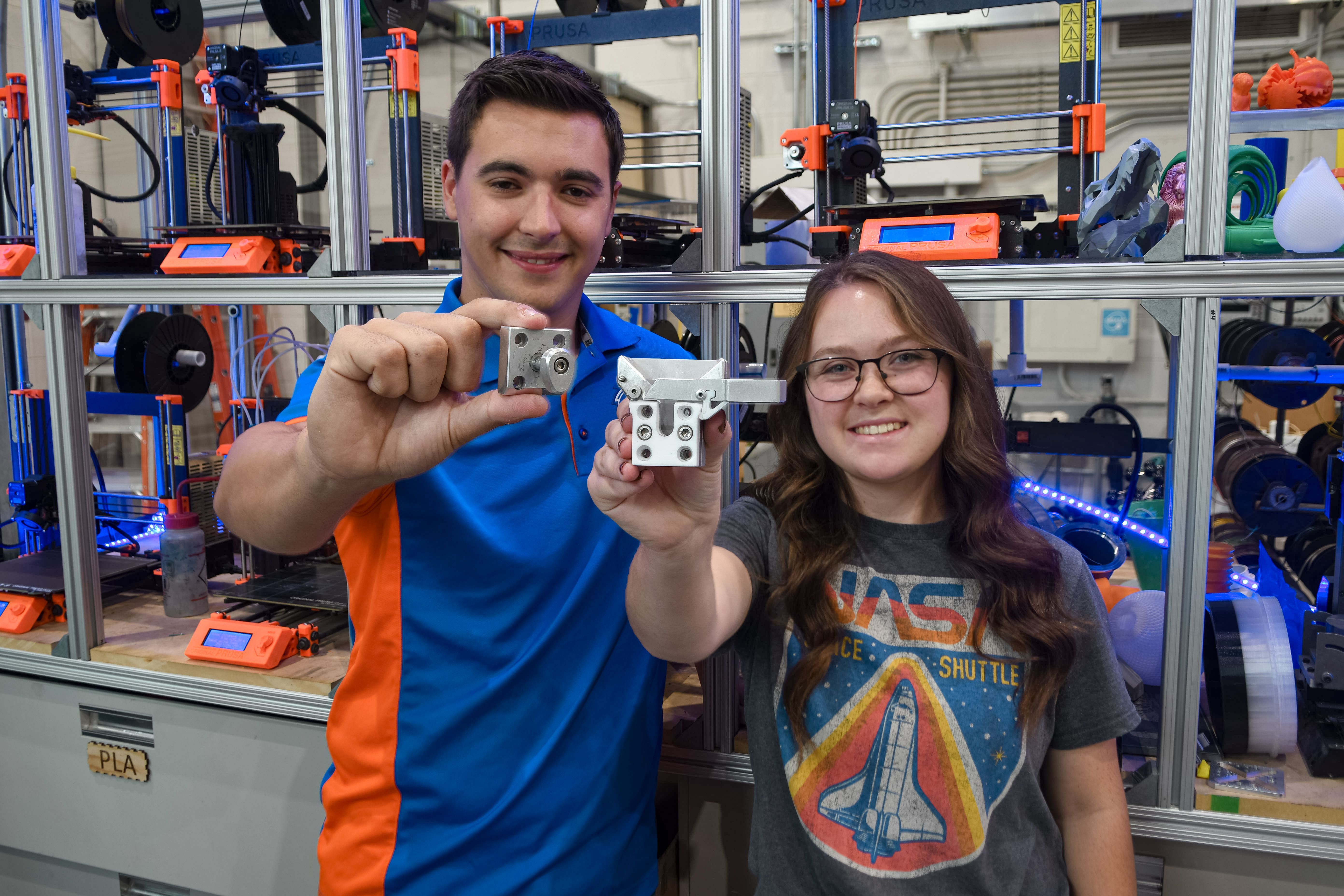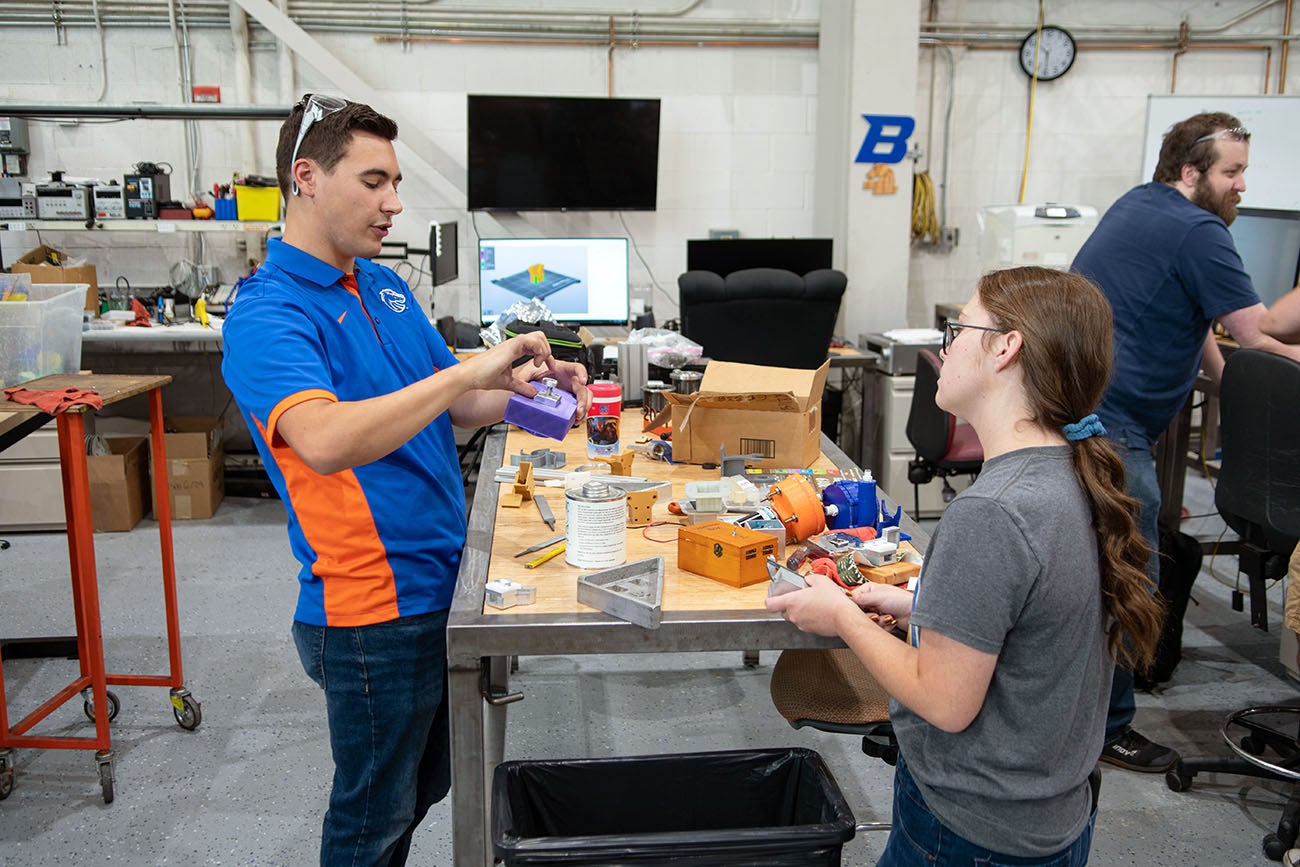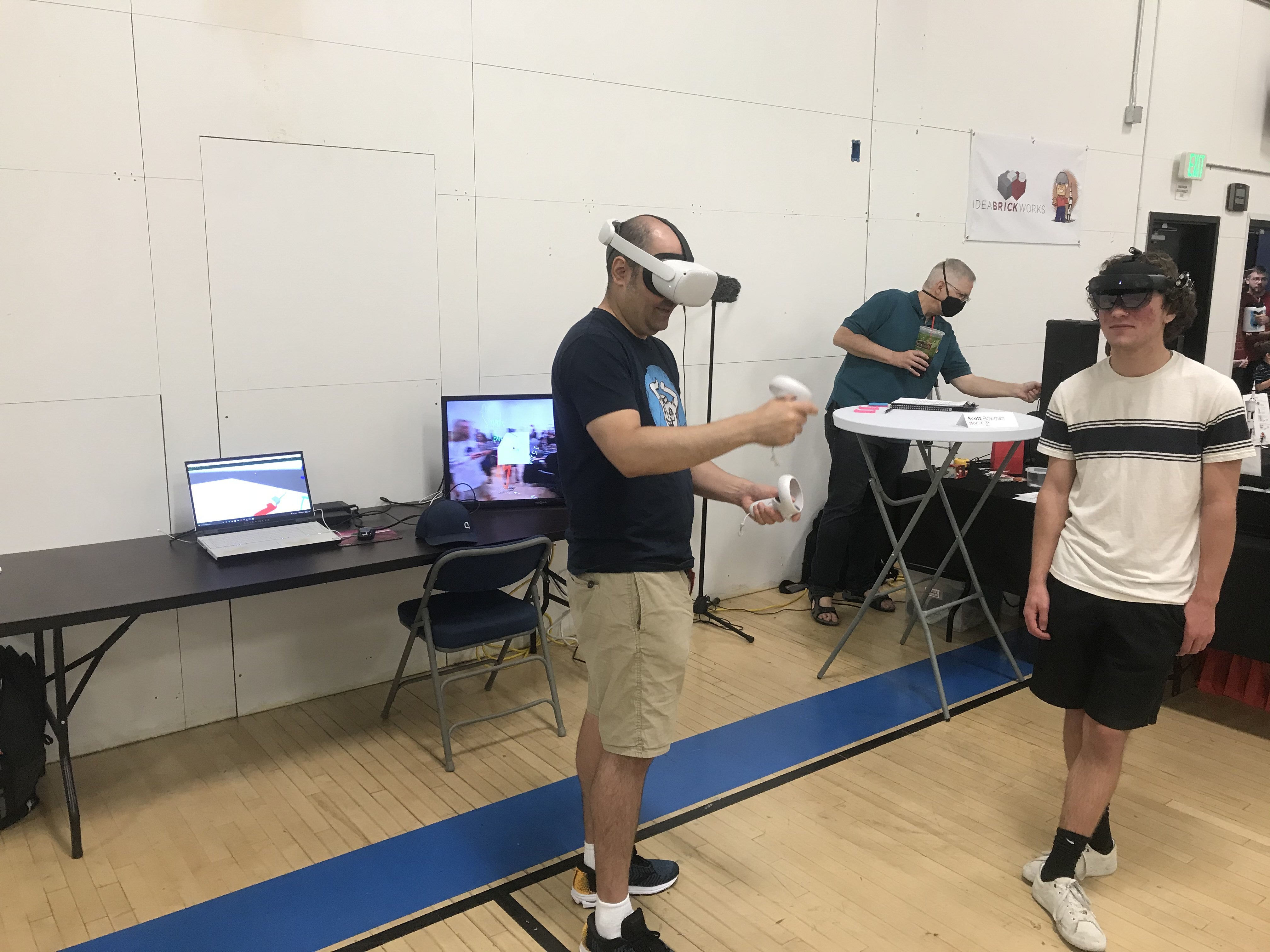
Boise State’s students have a long and proud history of challenging themselves and their creative abilities as members of NASA’s Microgravity Neutral Buoyancy Experiment Design Teams (Micro-g NExT), and the Spacesuit User Interface Technologies for Students (SUITS) teams. These complex projects challenge university students to design and build a tool that addresses a current space exploration challenge,and to develop software for an augmented reality, helmet-based display for astronauts, respectively.
However, in the most recent competition year, COVID scattered Boise State’s team members back to their homes across the state and country, and defied them to continue their work in the face of a global pandemic. How on earth would students design an astronaut’s helmet display, or build a space suit attachment quick release system for use on the lunar surface during NASA’s Artemis missions, all from their living rooms and laptops?
Like true Broncos.
In the words of SUITS team lead Caleb Cram, the resilient students not only learned to work around the challenges of COVID, but also developed new and improved processes for the future.

“Necessity is the mother of invention,” Cram said. “By the end of the semester, we had concocted an efficient method of communicating, and wrote extensive documentation regarding the current progress and future plans of the project which together has helped us operate more effectively than we would even under normal circumstances.”
Boise State’s Micro-g NExT and SUITS teams not only took on the challenge of participating in the year-long projects, but they also both had their proposals accepted by NASA, developed their prototypes, and delivered presentations of their prototypes to NASA engineers, who then personally tested them.
“Both teams did a fantastic job this year,” said mentor and Distinguished Educator in Residence, Steve Swanson. “It was not easy working remotely on the designs and proposals, but the students found a way and excelled. The testing at NASA’s Johnson Space Center went very well for both teams, even though the student teams directed the tests from Boise. The NASA engineers were impressed by functionality and quality of the teams’ prototypes.”

The Micro-g NExT team developed HOLSTER.
“Our device, HOLSTER (Holder of Lunar Surface Tools for Easy Retention) was tested in NASA Johnson Space Center’s Neutral Buoyancy Laboratory, a large pool where astronauts train for spacewalks,” said Ainsley Iwersen, co-lead for Micro-g NExT. “However, before our device could be tested we had to give a safety presentation to NASA through Microsoft Teams detailing why our device was safe to test in the NBL. Seeing our device tested in the NBL was an incredible experience. We have been working on this device for the past year, and saw it go from an idea on a piece of paper to a reality.”
The NASA SUITS team developed ARSIS 4.0.
“One massive challenge that NASA faces is how to actually implement Augmented Reality into a space suit,” said SUITS team lead Caleb Cram. “It seems simple at first, but there’s a multitude of software and hardware difficulties that have yet to be solved. For example, the Hololens 2 Augmented Reality headset works by projecting light onto a flat lens directly in front of the users’ eyes which can create the illusion of holograms in your vision. However this technology is being completely re-engineered to work with a space suit due to the fact that the holograms need to appear on the curved dome of the visor which inherently will not work with the current solution. In answer to these challenges, we have developed ARSIS 4.0 which seamlessly integrates Augmented Reality, Virtual Reality and a desktop portal to create a cohesive mixed reality experience that we are calling telepresence.”

NASA SUITS team members:
- Caleb Cram, Games, Interactive Media and Mobile program
- Olivia Thomas, Games, Interactive Media and Mobile program and Computer Science Program
- Marc Frances, Games, Interactive Media and Mobile program
- Akiah Tullis, Games, Interactive Media and Mobile program and Computer Science Program
- Trice Dayrit, Games, Interactive Media and Mobile program
- Tri Nguyen, Games, Interactive Media and Mobile program
- Jake Standerwick, Games, Interactive Media and Mobile program
- Debjit Roychoudhury, Computer Science Program
- Daniel Lambert, Games, Interactive Media and Mobile program and Computer Science Program
- Cody Leishman, Highschool
NASA Micro-g NExT team members:
- Ainsley Iwersen, Mechanical Engineering program
- Soren Witter, Mechanical Engineering program
- Andrew Byrd, Mechanical Engineering program
- Zachariah Vandeventer, Mechanical Engineering program
- Alejandra Almaraz , Mechanical and Biomedical Engineering program
- David Mckay, Applied Science, Innovations & Designs
- Riley Woodworth, Mechanical Engineering program
- Dillon Eyer, Materials Science, Electrical and Computer Engineering program
- Carolyn Murrey, Mechanical Engineering program
- Kalynn Alexander, Biology program
- Logan Hilton, Mechanical Engineering program
- Cade Greseth, Materials Science and Engineering program
- Dustin Nguyen, Materials Science and Engineering program
- Victor Nguyen, Mechanical Engineering program
- Lexie Friel, Civil Engineering program